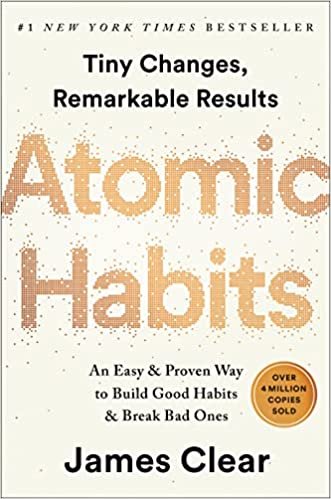
Introduction
Atomic Habits is a book written by James Clear. The main thesis of the book is that our habits and identity play a larger factor in our lives than the goals we set out for ourselves.
While I agree that habits and identity play a very large role in change (or, who we are), measuring through goals can still be useful.
That said, the majority of the book I do enjoy and I think it’s worth reading.
Summary
Out of a ranking from 1-10, I’d rank this book at least a 9.5. There are a few factual things that make little sense, and what I felt was a total downplay of goals, but this is easily one of the best books on personal change management I’ve seen.
Details
Atomic Habits is primarily based in creation of and maintenance of, an identity that better reinforces the type of person we want to be.
The book starts by describing the problem with making “goals” our primary focal point when we’re wishing to change. James points out, and rightfully so, that goals have some problems, namely (pg. 24):
- They’re temporary - It may take awhile to get that goal (e.g. losing 10 pounds may take some time), and the win we get from that is also temporary (e.g. we’ll gain the weight right back)
- They aren’t a vote for who we want to be - This relates to #1, but we’re not really changing ourselves for the long term. Our identity itself doesn’t change from the goal.
- They restrict our happiness - We have to wait til the goal is met to really be happy about the progress.
In order of importance, our identity is the most crucial and central part of ourselves. Then comes our habits, then comes our goals (pg. 30).
The story we tell ourselves - that being, our identity, is by far the most important thing when defining our reality and what will stick.
Habits can help “cast a vote” into the identity we want. Furthermore, habits (any time doing X), is a “win” for us. More simple celebrations.
The book also goes into the stages of a habit creation (pg. 47) which includes the cue (what predicts the reward), craving (the emotional force that makes us desire the thing), response (The action we do to cure the craving), and the reward (What we get from the response).
Which leads to tweaking each stage depending on if it’s a habit we want, or a habit we don’t want. Largely speaking, we want to make good habits easier and more attractive, and bad habits harder and less attractive.
Most of the rest of the book is about implementation and the tweaking of the above stages to optimize the goal. For example, modifying the environment to make a habit easier (pg. 85), to making it easier (pg. 151), to making it more satisfying (many pages). There’s equal coverage of how to deal with and eliminate bad habits.
There are a few chapters that I really enjoyed.
Chapter 13 - Decisive Moments (pg. 161)
Random choices during the day can help shape the way the day will continue to unfold. Each time we make good or bad choices, our day will shift a bit and those choices will greatly impact our choices/outcomes later on.
One notable example of this is if after work, one decides to turn on the TV or to read a book. For me, reading is better than TV. That decisive moment impacts the entire evening, and how I feel the next day due to that decision.
Chapter 18 - Talent
5 genetic traits are discussed, these are the “Big 5”. They are, and their ranges are:
- Openness to Experience
- Curious/Inventive TO Cautious/Consistent
- Conscientiousness
- Organized/Efficient TO Easygoing/Spontaneous
- Extroversion
- Outgoing/Energetic TO Solitary/Reserved
- Agreeableness
- Friendly/Compassion TO Challenging/Detached
- Neuroticism
- Anxious/Sensitive TO Calm/Stable
This isn’t so much to state that one type of trait is better or worse than another, but that that a weight one direction or the other can influence what habits we find easy or not to build.
Conclusion
I really felt this book is by far one of the best I’ve read in 2022. I took very detailed notes of the book, while reading, and have referenced those notes on multiple occasions (including the writing of this post). While I don’t agree with everything in the book, the vast majority I do believe would help out the majority of people.
You can find some links on:

